Eighteen college students and I were scheduled to take our winter snowshoeing and snow camping fieldtrip in northern Wisconsin on an early December weekday. It was over an hour drive to our destination.
I carefully watched the weather report several days prior, and there was warning of a major snowstorm approaching. They predicted a lot of snow and high winds. When I calculated the temperature and wind speed, I saw that the wind chill would only be 9 to 10 degrees Fahrenheit. At that juncture, I decided not to cancel the trip, but to remain close to town rather than traveling far and risk getting stranded. I informed students of the conditions and change in plans. Everyone was excited to go with the new plan.
Only a few miles from campus sits Jordan Park, located on the Plover River. I quickly secured permits from the Parks Department, and we headed off to this little front-country location to set up camps on a point along the river.
Since the snow began to fall when we arrived, we carried our snowshoes to the campsites. We set up tents in three sites with 6 students at each location. At our main site, campers tied up a tarp to block the wind….and they were able to get a nice campfire burning and cook supper. The storm then picked up speed and it became really windy and snowing hard.
When I got back to my campsite, I crawled into my tent and bundled up in my zero-degree sleeping bag. I watched the tent shake vibrantly and listened to the sound of heavy snow blasting against the tent wall. It lulled me fast to sleep.
We woke the next morning to lots of snow for snowshoeing back to the vans. We not only survived the storm, but my students enjoyed the challenge. Arriving back on campus, we discovered that the governor of Wisconsin closed all Wisconsin offices and universities due to the storm…a very rare call.
The very first prevention consideration before heading out on either a snowshoe hike or a snow camping overnight is to check the weather forecast. Go online to the National Weather Service. Identify the state and region you plan to hike or camp, and look carefully at the forecast for the days you plan to be there. You can reference their wind chill chart at http://www.nws.noaa.gov/om/winter/windchill.shtml.
The next step is to do a weather risk assessment. Identify the forecasted conditions including temperature, wind-chill, snowfall or other precipitation (sleet, rain/snow mix), and potential storm predictions. Then assess those conditions as to whether they put your group at risk or not. On the above trip, conditions did not prevent us from spending a night in tents close to home.
Identify the forecast condition including temperature, wind-chill and snowfall.
But, conditions could be really severe and result in cancelling a trip. I personally will not winter camp in temperatures lower than minus 5 degrees Fahrenheit. It becomes too uncomfortable to enjoy. And, I would not venture far from home in a major snowstorm.
Snowfall can come in the form of flurries, showers, storms and blizzards. The National weather Service points out that a blizzard exists when falling temperatures result in heavy amounts of hard driving snow, with winds of at least 35 mph lasting for at least three hours. Visibility is extremely limited and conditions are very dangerous. So, I would not venture out in a blizzard.
Another condition I would avoid is snowshoeing or winter camping in areas with potential avalanche danger. Where I live in central Wisconsin, avalanches do not exist. But in high hills and mountainous areas in the east and out west, avalanche areas should be avoided, unless you are skilled and trained to travel in those settings.
Do not take unnecessary risks when dangerous winter weather threatens a trip. There are always other days, times and locations for enjoyable snowshoeing and snow camping. But if caught in an unexpected snowstorm or blizzard, don’t panic, do not wander off, find or build a suitable shelter, keep warm and wait out the storm. Then plan your evacuation carefully.
Keeping safe in snowstorms
In a very sad story from a 1974 account in the Adirondacks, a hiker’s Thanksgiving weekend trip ended in ill fate. Two young men backpacked in the High Peak region that year. One hiker was somewhat experienced and the other took his first backpacking trip.
Both trekkers were ill prepared wearing blue jeans, flannel shirts (all cotton) and summer hiking boots, carrying less food then required, and taking a flask of brandy rather than water. However, they did have down sleeping bags and pads and down jackets. Unfortunately, when weather conditions worsened, the hikers did not use their equipment appropriately.
Temperatures dropped and snow fell unexpectedly as they continued on their hike upward. The inexperienced backpacker began to experience hypothermia on the trail, losing some clothing, getting wet from falling partially into a creek and not being properly cared for by his fellow backpacker and others on the trail. When his friend left him behind to go get help, the inexperienced hiker went into final stages of hypothermia. A rescue was attempted. Sadly, the young man died just prior to reaching a cabin at a lake in the wilderness.
The first lesson from this event is to know your limits. Do not take on an adventure that is beyond your level of skill, knowledge, ability and experience.
Secondly, follow the Boy Scout motto and “be prepared.” Take the necessary safety and comfort gear for a snowshoe hike or a winter camping trip.
Snowshoe hike – besides snowshoes and hiking poles, take a daypack with:
- Some food and water
- Extra socks, mittens, cap and non-cotton sweater
- Map, compass and/or GPS, cell phone, whistle
- Matches, fire starter, candle, gas stove and fuel, metal cup
- Pocket knife, multi-utility tool, homemade snowshoe repair kit (including duct tape)
- Flashlight/headlamp, sunglasses, sunscreen, chap stick
- First aid kit, emergency packable space blanket, shakable chemical hand warmers
Snow camping trip – take a backpack with:
- Same as above (much more food and water), water treatment
- Backpack, pack cover, tent, tarp
- Winter sleeping bag, liner, pad
- Change of clothes
- Cooking gear, eating utensils, food bag, rope
- Toilet kit, small packable shovel
Thirdly, complete a wilderness first aid course and take along a first aid kit. Review what is in the kit prior to going on a trip. Know the signs and treatment for hypothermia and frostbite. Keep hydrated and well fed, stay dry and stay warm.
Lastly, whether on a hike or snow camping, know how to set up or dig out a shelter in case you are caught in a snowstorm. A shelter can be a tent surrounded with a small snow-wall, a quinzhee or snow shelter, a tarp shelter, or a stick/thatch shelter depending on the resources available.
For information on using a tent in winter, check out my Snowshoe Magazine article titled, “The Snowshoe and Tent Experience”. For tips on building a quinzhee, go to “The Snowshoe and Quinzhee Experience”.
Author and poet Maya Angelou once wrote, “Nature has no mercy at all. Nature says, ‘I’m going to snow. If you have on a bikini and no snowshoes, that’s tough. I’m going to snow anyway.’” Remember to play it safe when snowshoeing or snow camping during inclement weather. And for sure, wear snowshoes and not a bathing suit.

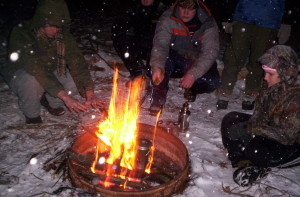
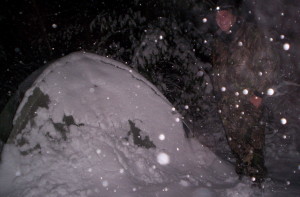
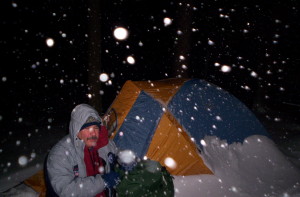
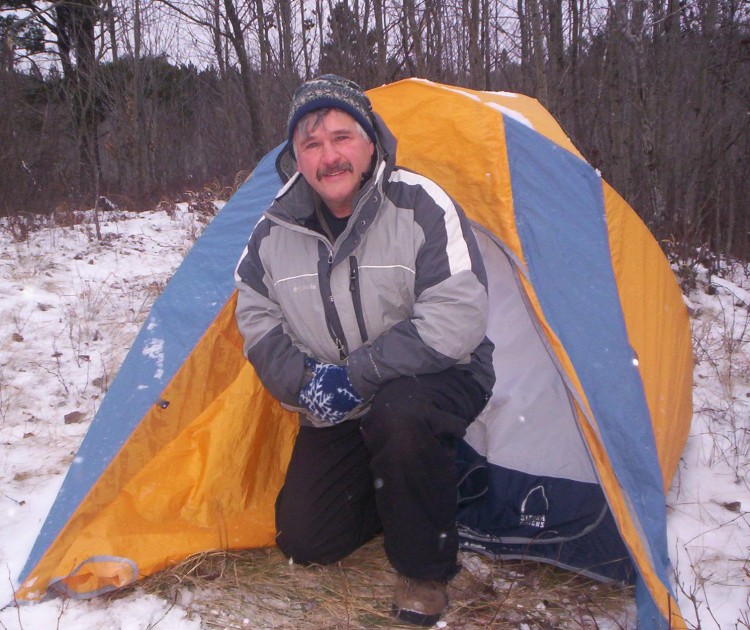
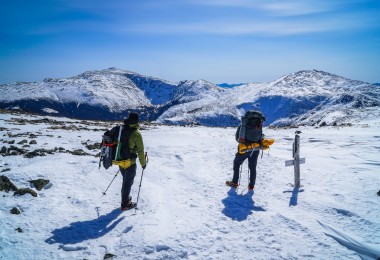
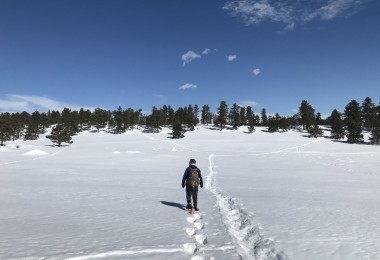
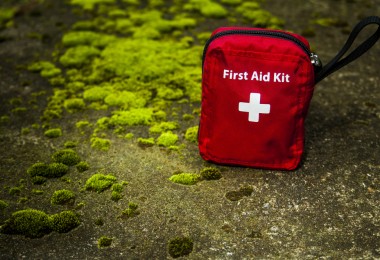
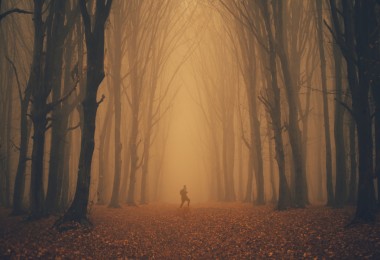

Leave a Comment